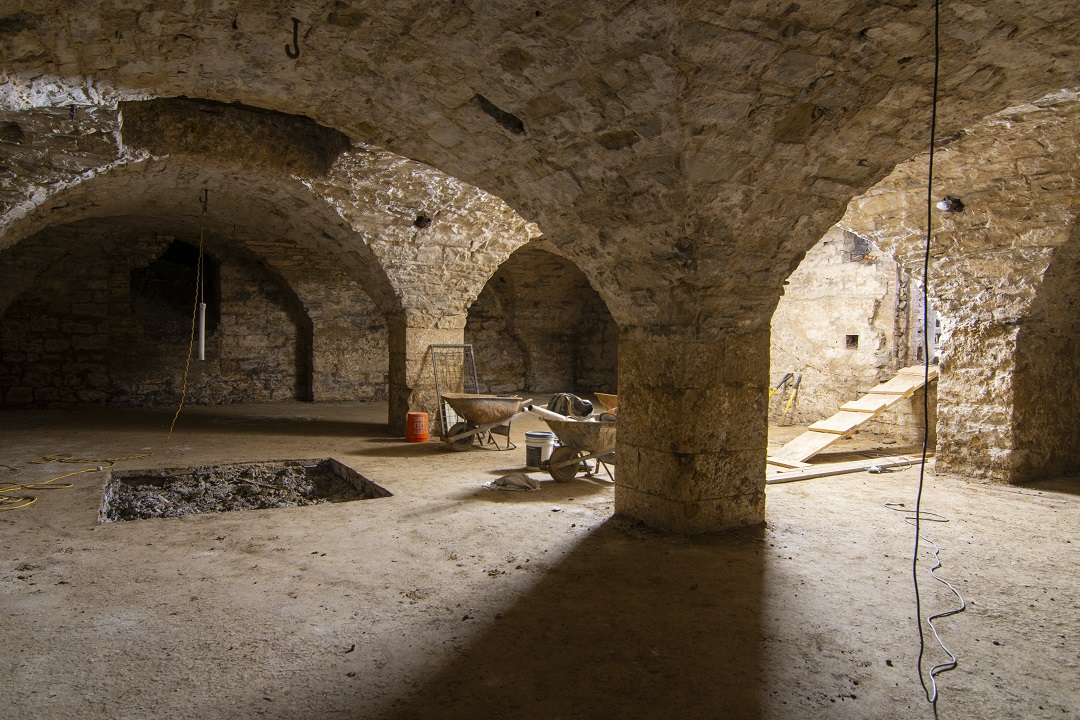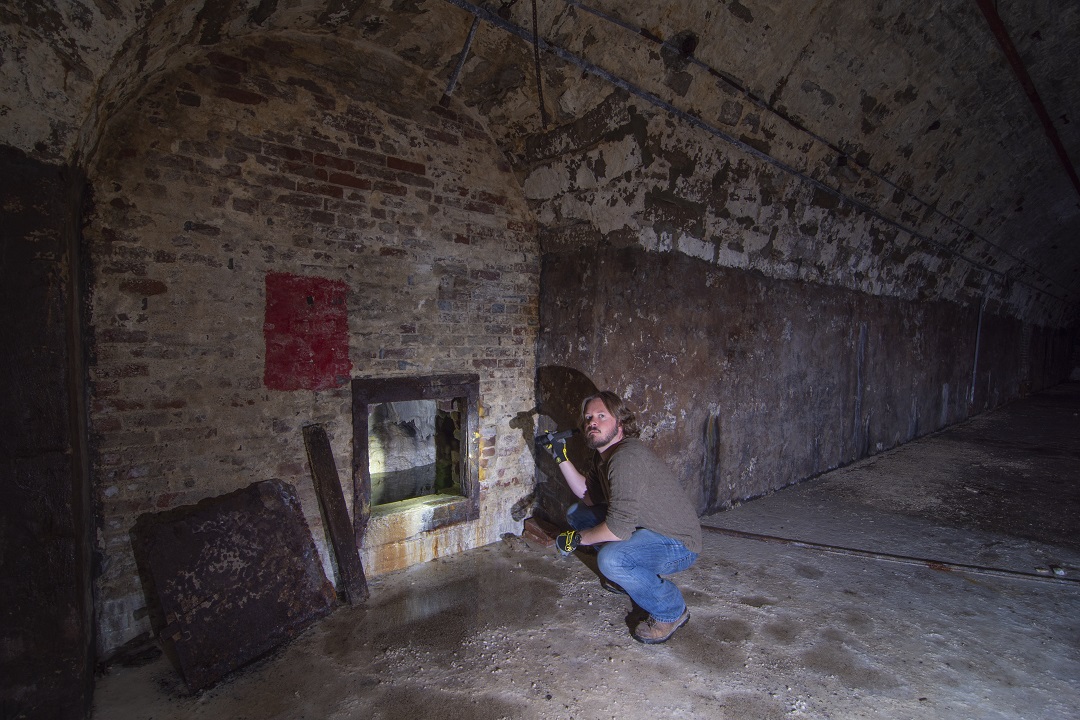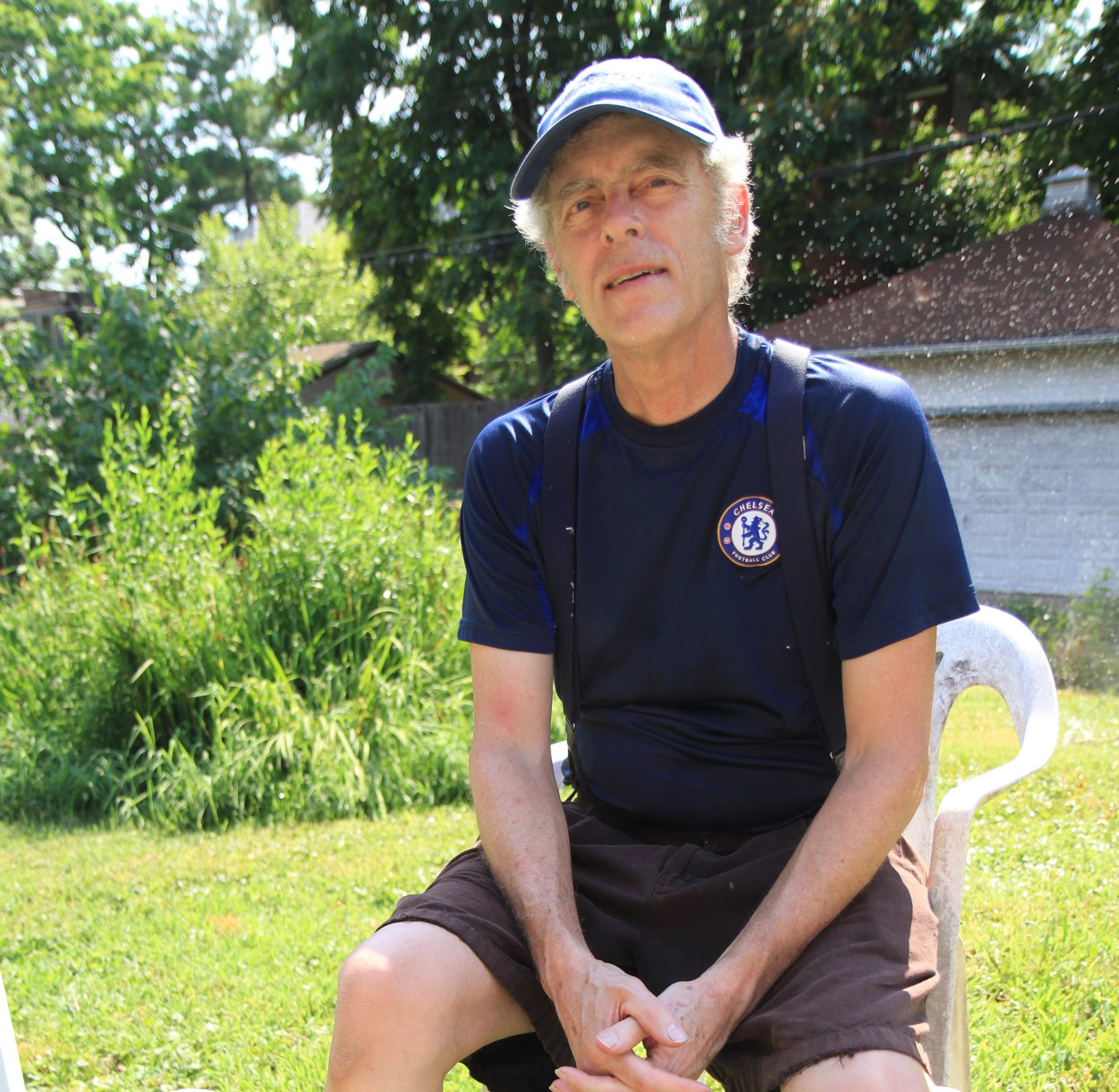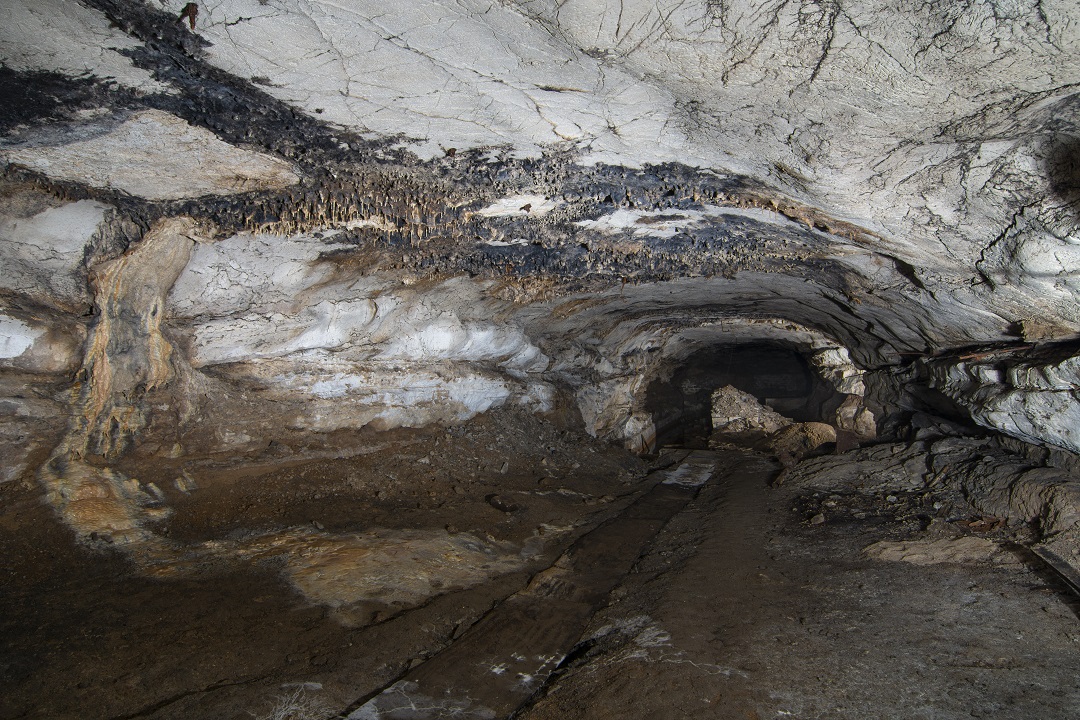Like a tree, some of the natural features that helped shape St. Louis exist below the ground. Except, unlike an American elm, the development of the city can’t be traced to roots but rather to caves.
“It’s a great story,” said Joe Light, president of the Meramec Valley Grotto, a cave exploration club with more than 90 members. “You have the geology — the caves formed. Two rogue Frenchmen [Pierre Laclède and Auguste Chouteau] come up the river, found a trading post that morphs into a city, [St. Louis]. A bunch of thirsty Germans show up, and the only way they can get their beer is to go underground, and they grab and utilize every cave they can find.”
In short, it’s no coincidence that St. Louis was both home to iconic breweries and located in Missouri, also known as “the cave state.”
These days, Light is one among a number of volunteer cave explorers and historians working to a shine a light into the caverns beneath the city; educate local residents on their history; and, in one case, reopen a beer-making cave to visitors.
“Everyone has their passions in life. Mine just happens to be caves in the St. Louis area,” said Light, a 48-year-old computer programmer. “We are very blessed to have the correct geology in Missouri for caves, and that geology extends under the city.”
The Germans who arrived in St. Louis did not invent the idea of using caves for beer making. In 2018, Stanford University archaeologists produced a report stating they had discovered 13,000-year-old stone mortars in a cave in Israel with residue indicating an extensive beer making operation.
However, Germans have long been associated with crafting beer and beer brewing practices. The word “lager” means storage in German, and that style of beer was brewed to be stored at a cold temperature. In the 15th century, brewers in the Bavarian region used yeast from Patagonia that could ferment in a cool setting and began doing so in dank caves and monastery cellars, according to a 2011 report in the Proceedings of the National Academy of Sciences.
The first German lager brewing in the U.S. started in St. Louis in the mid-19th century. In 1838, Johann Adam Lemp immigrated from Eschwege, Germany, to St. Louis and initially went into the grocery business. When he realized the cave system beneath the city could provide the refrigeration needed to brew lager beer, he shifted from selling food items to selling the alcoholic beverage.
On the surface of Second Street between Walnut and Elm, Lemp built a beer hall. Beneath the ground, he built vaults in a cave, according to “Lost Caves of St. Louis.”

The beer cellars below Earthbound Beer. (Jason Gray)
“Lemp’s new beer soon became so popular that he was forced to look for a new and larger location,” wrote authors Hubert Rother, a former local brewery worker, and his wife, Charlotte.
Lemp found parts of Cherokee Cave in south St. Louis, along the road that is now South Broadway, and rented the property from the city before later purchasing it. He converted the space into cellars and expanded his operation.
By 1864, his son, William Lemp, had moved the entire operation to South Broadway. William expanded the brewery to become one of the largest in the country. The local brewery industry and cave systems also gained new entrants, including Anheuser-Busch and the Griesedieck family.
The South Broadway stretch became “a favorite area for brewers because they could store beer in cool limestone caverns,” reported the St. Louis Post-Dispatch.
As Light explains it, if “a brewer had a cave, he made a lot of money.”
Anheuser-Busch, now Anheuser-Busch InBev, grew to become the world’s largest beer maker.
Lemp, Griesedieck, and other local brewers did not follow the same trajectory. William Lemp enjoyed commercial success but endured personal tragedy. His favorite son and heir apparent, Frederick Lemp, died unexpectedly from a heart ailment in 1901. Three years later, William shot himself and died. Over the next half century, three of his children would commit suicide.
Prohibition forced the Lemp brewery to close in 1919, and the company was sold at auction to International Shoe Company for less than $600,000, according to Explore St. Louis.
Meanwhile, the Griesedieck family endured financial ups and downs and brewed a number of different labels, including Pabst and Falstaff, which was discontinued in 2005. In 2019, Griesedieck descendants launched a new incarnation, Griesedieck Brothers Brewery.
Under Earthbound
Of course, Griesedieck, In-Bev, and any other iteration of those first German breweries no longer need caves to keep their beer cool.
“Before [artificial refrigeration], they had craftsmen in the caves and it was really an art form,” said Light. “Then, artificial refrigeration came along, and they could take everything from below ground and put it above ground, and it transformed from an art into a science almost overnight.”
These days, most of the lagering caves around the city are sealed up.
“A common misconception is that these German-American brewing families used these caves for a really long time,” said Chris Naffziger, an art historian and archives researcher for the City of St. Louis who has conducted extensive research of the local cave system. “German-American brewers in St. Louis were pioneers in the use of steam-powered, ammonium-based artificial refrigeration, so as interesting as the caves were, they were obsolete within 30 to 40 years.”

Chris Naffziger in Lemp Brewery. (Jason Gray)
Stuart Keating has managed to reopen one old lagering cave. As an environmental attorney, he spent a lot of time reading about the natural history of St. Louis and learned that it had more caves underneath it than any other metropolitan city. (According to researchers, there are 38 known caves in the city.)
Keating also had an interest in brewing beer and in 2014 opened a microbrewery, Earthbound Beer, in a 1,000-square-foot hallway on Cherokee Street. A couple years later, Keating, who serves as the head brewer, and his co-owners approached their landlord, Will Liebermann, about expanding to a larger location.
Liebermann suggested a building with an interesting basement. It turned out to be the former home of Cherokee Brewery Company, founded in 1866.
“We learned about the history of the building as we worked on it,” said Keating, who moved Earthbound into the space in 2017.
When previous owners of the property demolished the building above ground, the city forced them to push all the debris into the cellar to prevent a cave-in, Keating recalled. That meant Keating and a crew of 25 people had to spend five weeks working full-time and using their hands, shovels, and wheelbarrows to clear the remnants.
Keating and his business partners then mapped out the underground space via kayak. The old lagering cellars they uncovered, which are open to the public, are 2,500-square-feet wide with a maximum height of 14 feet. Beneath those are additional cellars and a sub-basement featuring barrel halls and additional rooms that Keating has not excavated.
The cellar had a giant ventilation shaft that brought in air from above; it has since been filled in. Cherokee Brewery workers had to use a block and tackle system to lower casks of beer into the cellars. To control the temperature, they also brought chunks of ice from the Mississippi River into the cellar.
“If your job was to work down there, you would work by lantern light, because there was no electricity, no gas, nothing,” Keating explained.
Keating has no plans to reopen and use additional parts of the cave — unless he wins the lottery, he says. Excavating the caves and making them accessible requires significant money.
McHose and English Cave
Bill Kranz and other volunteers are trying to reopen the McHose and English Cave in the Benton Park neighborhood of St. Louis. The space was used in the mid-19th century by brewer Ezra English and his business partner, Isaac McHose, but by 1866, his business, the St. Louis Brewery, had failed. People started using the cave to grow mushrooms, make wine, and entertain.

Bill Kranz of the McHose and English Cave Recovery Project. (Eric Berger)
The last recorded use of the cave was in 1919, after which time the entrance was sealed and, eventually, lost.
Fast-forward to the 1960s, when a church pastor who owned the land hoped to build a residence, recalls Kranz, volunteer coordinator of the McHose and English Cave Recovery Project, who lives across the street. The pastor dug into the ground to build a basement, but then suddenly stopped and walked away from the project. Neighbors suspected he had discovered an entranceway to the cave and determined that it was not safe to build a home there.
These days, the Benton Park Neighborhood Association controls the land through a trust and uses it for a community garden featuring peach and apple trees. Kranz and other volunteers hope to bolster the garden by growing mushrooms below ground. They also hope to reopen the cave for private tours.
A coalition of donors spent $5,000 to drill two holes into the ground last year. They then sent a camera and a laser tool below deck to map out the space, which no one has entered since about 1920, said Kranz.
It could cost $50,000 to drill a hole large enough to enter the caves.
The COVID-19 pandemic delayed the project, but the volunteers hope to open it within the next couple years.
For now, you can place your ear to a pipe that juts from the ground and hear a spring gurgling below. Kranz recently hosted about 27 seniors on a guided tour through Benton Park and the community garden..
Attendees told Dan O’Connor, a retired meteorologist who organized the visit, “I have lived in this area for so long, and I didn’t know this existed,” O’Connor recalled. “You don’t appreciate what you have in your own hometown.”
Not all beer cave owners are interested in visitors. The Cherokee Cave, which was used by Lemp and others, opened as a tourist attraction with a museum in 1950, but about a decade later, the Missouri Highway Department bought the property to build Interstate 55 and sealed the entrance, the Post-Dispatch reported.
The remaining entrances are on private property. The owners have had people break in, which is not only a nuisance to them but can be dangerous to people who try to enter, Light said.
For now, beer-drinking spelunkers eagerly await the reopening of the McHose and English Cave.
“I have been pursuing this objective for almost 20 years,” said Kranz, who is now 68 years old. “I just hope that I’m alive to see it.”
Author: Eric Berger is a regular contributor to Terrain Magazine.
Lead Photo: Cherokee Cave under Lemp Brewery by Jason Gray.


[…] work was also featured in an article on underground caves and beer in Terrain […]
[…] quelques exemples seulement, Terrain explore comment les caves à bière ont façonné la culture des boissons de Saint-Louis. À […]